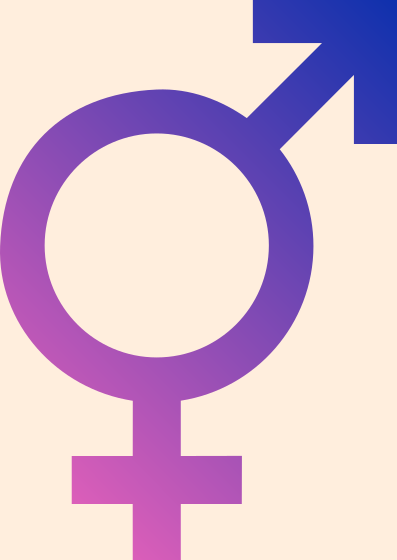
As previously discussed, in 1/500 births there is some confusion over sex due to the external genitalia. Intersexuality is seen as a pathological condition in modern society, and the genitalia of these individuals is surgically altered at the doctor's decision (Ojeda 58). This can come with a whole host of problems though, and can be painful, dangerous, and ineffective. “In retrospect, I wish that the operations had never happened, that I had simply be allowed to live out my life with the plumbing system originally given to me by my creator,” says Sven Nicholson, whose urethra closed up due to the surgery to repair his genitals, and has to use painful catheters to urinate (Dreger 179).
Most intersexuals are made into females, as for surgical vagina to count as functional, it doesn't need to be self-lubricating, or have sensitivity (Dreger 184). It is therefore easier to make an unsure case into a female then a male, though there is a strong possibility of the individual never having a fulfilling sex life. Also, when the majority are made into females, it creates the problems of gender confusion. No matter how much the genitalia are operated on, it usually does not change the way a person identifies. As Alice Dreger says when discussing the case of an intersexual raised female, but later diagnosed as a biological male, “To Sophie, the answer was apparently equally simple. She felt like a woman, she dressed like a woman, and she had always been a woman... Sophie had no interest in suddenly becoming a man” (3). This gender confusion is alarmingly common in intersexuals who have been operated on. Surgery at birth remains the norm though, due to the ideology that if children are sorted early, they will never experience confusion over their sex.
Modern Medicine does not allow for other alternatives to surgery, however, they do exist. One option is to put a hold on surgery until they are old enough to decide for themselves what gender they want to work towards. Also, many researchers have proposed a five gender system. There would be the typical male and female genders, male pseudohemaphrodites (people with ambiguous genitalia and testes), female pseudohemaphrodites ( people with ambiguous genitalia and ovaries), and 'true' hermaphrodites (see Intersexuality, Part One to explain the ''), who have no gonads, or both (Dreger 36). Both of these would increase the medical acceptance of intersexuality as something other then a disease, and allow intersexuals to make their own decisions regarding surgery. However, it would challenge every idea people have about gender.

The idea of intersexuals living as they were born is almost repulsive to society. Says Maria Coventry, an intersexual, “one of the things about being born with genitals that challenge what is considered normal is that no one tells you that there is anyone like you... You are purposefully isolated, your difference covered up, and it is horrible” (Dreger 175). This isolation is because of firmly ingrained ideas of Western society, where genders stay in their own roles. This is seen in everything from gender roles, bathrooms, locker rooms, clothing, and the way people are treated, to sexual orientation (Dreger 8-9). Even language leaves no room for androgyny, with the pronoun “it” being derogatory when used for a person instead of “he” or “she.” A large variety of variation within male and female genders are accepted, such as different shaped/sized/colored genitalia, breasts, body hair, hair length, and sometime even clothing is accepted, but as soon as the structure of the genitalia is brought into question, the general public shies away room the topic (Dreger 4-5). After all, if there are more then two genders, how does determine something as simple as sexual orientation (Dreger 28)?
Intolerance for gender confusion built into society inspires medical professionals to treat it as a pathological condition, something to be cured, to be operated on. This course of action holds more dangers then its worth, though, including the risk of death from improper medical care. And yet, intersexuality continues to be treated as a disease, because society is simply not structured to bear more then two genders.
Works Cited
Dreger, Alice. Hermaphrodites and the Medical Invention of Sex. London, England: Harvard University Press, 1998. Print.Haeberle, Erwin . "Causes of Intersexuality." Manus Hirschfeld Archive For Sexology. 2005. Web. 28 Jan 2010.
Ojeda, Auriana . Male/Female Roles. 2nd. New York: Greenhaven Press, 2004. Print.
http://upload.wikimedia.org/wikipedia/commons/thumb/b/b7/Another_hermaphrodite_symbol_bg-color-FFEEDD.svg/397px-Another_hermaphrodite_symbol_bg-color-FFEEDD.svg.png
http://www.chicagoemploymentlawyer.net/gender.jpg
No comments:
Post a Comment